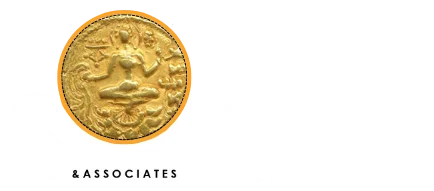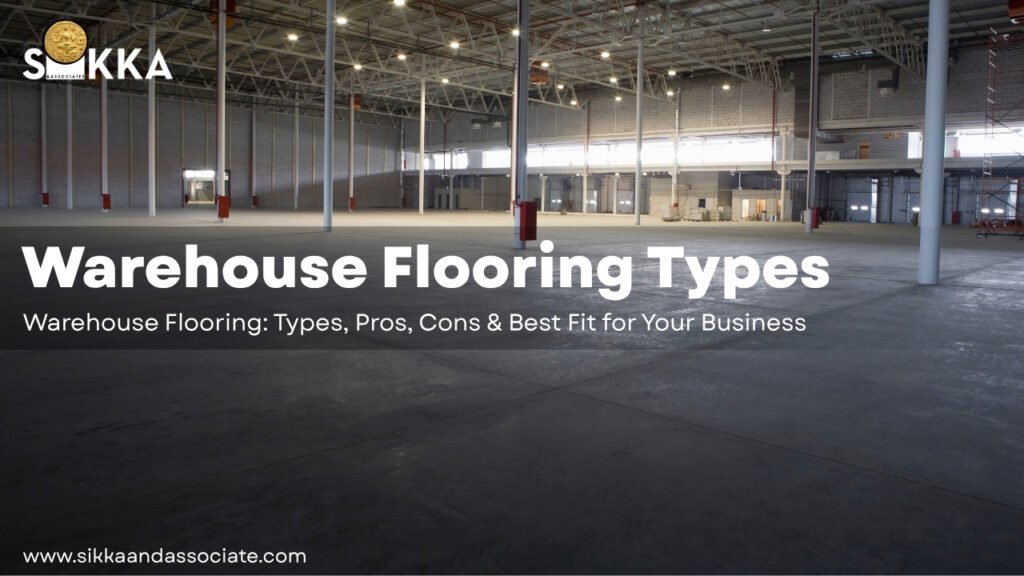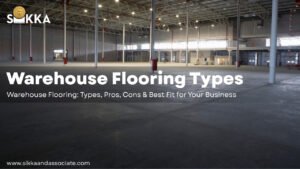The Complete Guide to Warehouse Flooring: Types, Pros, Cons & Best Fit for Your Business
Warehouse flooring is much more than a surface to walk or drive machinery on—it’s fundamental to safety, durability, efficiency, and long-term costs. The right flooring can boost productivity, support heavy loads, and even improve worker well-being. Below, we explore popular flooring options for warehouses—including M2K flooring, VDF (Vacuum Dewatered Flooring), Trimix, Kota stone, and more—detailing each type’s key features, pros and cons, and suitability for different warehouse needs.
1. Overview: Why Flooring Matters in Warehouses
- Load Capacity: Warehouses often house heavy goods or machinery, so the floor must withstand high loads.
- Safety: Slip resistance and smoothness can prevent workplace accidents.
- Maintenance: Durability and ease of repair minimize business downtime.
- Cost Efficiency: Long lifespan and low maintenance translate into savings over years.
- Special Requirements: Hygiene (food/pharma), chemical resistance, or dust control may be needed for certain sectors.
2. M2K Flooring
M2K as a brand is better known for residential and commercial spaces, especially in India, rather than being a distinct industrial flooring technology for warehouses. If you refer to floors installed by the M2K Group, they typically offer standard concrete or marble/tile-based floors designed for commercial durability and aesthetics. Since there is no evidence M2K refers to an exclusive industrial flooring process, its suitability relies on the underlying materials used (often concrete or vitrified tiles).
Pros
- Aesthetic appeal suitable for showroom or commercial areas.
- Customizable finish and design.
Cons
- Limited heavy-duty strength compared to specialized industrial floorings.
- Potentially higher cost for top-end finishes.
- Less suitable for environments needing chemical resistance or heavy machinery.
Best Fit
- Office spaces attached to warehouses
- Warehouses for non-heavy goods, retail, or display
- Environments prioritizing aesthetics over heavy-duty performance
3. VDF Flooring (Vacuum Dewatered Flooring)
VDF is a specialized concrete flooring method using vacuum pumps to extract excess water from freshly laid concrete. This increases density, strength, and reduces cracks.
| Feature | VDF Flooring |
| Material | Concrete with dewatering |
| Thickness | Typically 100–200 mm |
| Finish | Smooth, hard-wearing |
Pros
- High strength and durability—withstands forklifts, pallets, and heavy loads
- Reduces shrinkage and cracks
- Faster drying/curing time
- Smooth, uniform finish
- Cost-effective for large areas
Cons
- Requires skilled labor and equipment
- Surface can be slippery if untreated
- Not as visually appealing as polished concrete or tiles
Best Fit
- General warehouses storing heavy goods or machinery
- Logistics hubs and distribution centers
- High-traffic loading/unloading zones
- Factories requiring durable, crack-resistant flooring
4. Trimix Flooring
Trimix, also known as Tremix or vacuum dewatered concrete, is very similar to VDF in process, but specifically emphasizes the three-stage process—concrete laying, vacuum dewatering, and surface finishing. It is the industrial standard for robust, long-lasting surfaces.
Pros
- Exceptional durability for heavy-duty industrial settings
- Excellent wear and tear resistance
- Low maintenance
- Cost-effective for high-volume areas
- Quick curing compared to traditional concrete
Cons
- Requires specialized equipment and experienced contractors
- Limited design or color options
- Surface hardness can increase noise and worker fatigue
Best Fit
- Warehouses with high load (machinery, racking)
- Garages and automotive warehouses
- Manufacturing plants with heavy vehicles or cranes
- Industrial flooring for foundations
5. Kota Stone Flooring
Kota Stone is a natural limestone, popular for its strength and aesthetic appeal, commonly used in industrial and outdoor settings in India.
| Feature | Kota Stone Flooring |
| Material | Sedimentary limestone |
| Finish | Matte or polished stone |
Pros
- Highly durable, resists heavy impacts
- Non-slippery
- Affordable compared to granite or marble
- Requires minimal maintenance
- Good for both indoor and outdoor use
- Natural aesthetics
Cons
- Not seamless—stone slabs create joints that can gather dust/dirt
- Can develop surface undulations over time
- Prone to acid/chemical etching
- Installation can be labor-intensive
Best Fit
- Warehouses for stone, ceramics, tile, or moderate industrial storage.
- Areas with high foot traffic but limited chemical exposure.
- Parking lots, godowns, and open storage yards.
6. Other Popular Warehouse Flooring Types
Concrete (Polished or Bare)
- Bare concrete is cost-effective and strong but can produce dust and cracks if not treated.
- Polished concrete is smooth, dust-resistant, easy to clean, and visually appealing, but more expensive than basic concrete.
Epoxy-Coated Flooring
- Applied as a resin surface over concrete.
- Pros: Highly chemical resistant, seamless, easy to clean, customizable colors/safety markings.
- Cons: Higher initial cost, can peel/crack if not installed well, requires downtime for curing.
Rubber or Vinyl
- Used in specialized areas for comfort or acoustics.
- Pros: Reduces fatigue, good for areas where workers stand all day.
- Cons: Expensive, not suitable for very heavy loads.
7. Comparison Table: Pros and Cons by Flooring Type
| Flooring Type | Durability | Maintenance | Cost | Chemical Resistance | Aesthetics | Best For | Key Cons |
| M2K (General) | Medium | Medium | High | Low | High | Light warehouse, office/showroom | Less durable for high load; aesthetics-focused |
| VDF | High | Low | Medium | Moderate | Medium | Heavy duty, manufacturing, logistics | Needs skilled labor, basic visuals |
| Trimix | High | Low | Medium | Moderate | Low | Machine shops, heavy manufacturing | Hard on feet, minimal design options |
| Kota Stone | High | Low | Low | Low | Medium | Storage, outdoor areas, moderate industry | Acid sensitive, joint gaps |
| Polished Concrete | High | Low | Medium | Medium | High | Clean, dust-free, commercial/retail | Costlier than plain concrete |
| Epoxy | Medium | Low | High | High | High | Chemical/pharma, food, hygienic warehouses | Peeling/cracking, costly fix |
8. How to Choose the Right Warehouse Flooring
Consider these factors:
- Weight Load: For heaviest machinery and frequent forklift traffic, VDF, Trimix, or reinforced concrete are ideal.
- Chemical Resistance: Epoxy or polyurethane floors work best in chemical/pharmaceutical warehouses.
- Hygiene: Epoxy or polished concrete is easiest to clean (good for food, pharma, or high sanitation operations).
- Outdoor Exposure: Kota stone is preferred for open areas, parking, and places exposed to the elements.
- Comfort/Safety: Areas with prolonged standing or walkways may benefit from rubber matting or treated surfaces.
- Quick Turnaround: VDF and Trimix cure faster than traditional concrete, minimizing business interruption.
9. Recommendations: Flooring Types for Specific Warehouse Uses
| Warehouse Type | Recommended Flooring | Why |
| General Storage | VDF, Trimix, or concrete | Strength, affordability, quick application |
| Heavy Machinery | Trimix, VDF | Highest load-bearing capacity, durability |
| Chemical/Pharma | Epoxy-coated concrete | Resistance to chemicals, seamless hygiene |
| Food Storage | Polished concrete, Epoxy | Easy to sanitize, visually clean |
| Outdoor/Open Warehouses | Kota stone | Weather resistance, affordable, non-slip |
| Showrooms/Office Combined | M2K (concrete/tile finish) | Visual appeal, easy cleaning |
| High Foot Traffic/Workers | Rubber (walkways/sections) | Comfort, reduced worker fatigue |
10. Conclusion
Selecting the right warehouse flooring is a strategic investment. While each type—be it M2K, VDF, Trimix, Kota stone, polished concrete, or epoxy—has unique advantages, your final decision should match your operational needs, budget, and longevity requirements. Evaluate your load, environment, and workflow, and invest in a flooring solution that offers long-term value, safety, and durability for your business.






